Introduced in 1971, the Misuse of Drugs Act is at the root of all law, policy and practice around drugs in our society, and people who use them. It created the drugs classification system, made the possession and distribution of these classified drugs illegal, and tied the penalties for breaking this law to how ‘bad’ the drug was. 50 years on, I think that most of us could agree that this law is worth reviewing.
For many of us working in the drug treatment and support sector, this is a given, and in fact many are pushing for much more than a review of legislation that is seen as outdated, ineffective and ultimately harmful. But even for those who do still believe that this justice focussed approach is the way to go, surely it’s clear that something isn’t working?
A blog from Transform and Anyone’s Child, making the MDA’s 50th anniversary, sets out the stark statistics.
In 1971, when the Act came into force, fewer than 10,000 people used heroin. This has risen by 2400% to 250,000 people today.
Cannabis use has risen by 400% to 2.5 million people
Just under a million people in the UK use cocaine each year, the highest rate in Europe, half a million use ecstasy and over 150,000 use other psychoactive substances.
The sharp and horrifying rise in the number of lives lost to drug related deaths is further proof that what we are doing is not working.
The cost of crime related to Class A drugs alone is estimated to be £4 billion per year – multiplied over the last half a century, could anyone argue that this staggering investment has produced the results we wanted to see?
And yet, the MDA has never been subject to a formal governmental evaluation or review. Why is that?
I think the answer relates to the wider influence that this legislation had and continues to have on public attitudes towards drugs and perceptions of the people who use them. The stigma this creates is powerful, apparently powerful enough to enable us to ignore what experience and evidence is making abundantly clear.
Time has moved on but I think that what we wanted to achieve then is what we still want to achieve now – we want safe and healthy communities, we want a legal system that targets those who would profit from people’s pain, and we want to reduce harm as much as we can. In Scotland, we have diverged significantly from the UK government – who retain control over this legislation – in our view on the best way to achieve these goals.
Perhaps we have been forced to. For reasons that are complex, interrelated and poorly understood, we have been hit hardest by this crisis; perhaps that is why we appear to be more willing to consider the kind of new ideas that are rooted in evidence, but challenge our engrained stigma. Safer Consumption Facilities, drug checking services, heroin assisted treatment, even the positioning of problematic drug use as a health – rather than a justice – issue; every move is constrained by the limits of the MDA.
It’s past time we looked again at our legal framework and asked ourselves some important questions. How is it working? What are we trying to achieve? Are there other approaches we could try? What do we need to do? We’ve asked some of those questions within TPS and this film shares our answers. I hope that you will consider these questions, and join the conversation.
